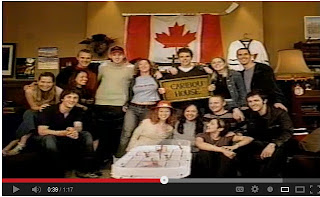Think about it for a minute. There are a lot of places to trash food. Farmers won't ship a lot of their blemished yield because it won't sell. Some food gets damaged in transport and storage. A large percentage of produce and meat just doesn't sell at the supermarket. A lot of people don't eat what they buy or toss out what they cook. Check out the garbage at a restaurant some time. There is a lot of uneaten food there too.
I had a chat with a former CEO of one of the world's larger grocery chains who is now an advocate on food waste reduction. His response:
"Between 30% and 50% is wasted."
The UN backs up his number at 33%.
When you consider 1 out of 8 people are chronically undernourished (The United Nations Food and Agriculture Organization, 2010-2012) the math works out that we have no trouble feeding every one on this planet- and a couple billion more. As a world, we seem to be forgetting the Golden Rule of doing unto others.
While chronic undernourishment is reserved for the poorest of the poor (1,400 million people are living under $1.25 a day (World Bank 2008)), Canada and the USA also face hunger issues.
In Canada,a comprehensive study on hunger called HungerCount (2012), asserted that close to 900,000 Canadians use food bank each month. About 400,000 of those folks are children and youths. According to Feeding America, 1 in 6 Americans face hunger. With stats like these, it is clear that there is an ongoing need to support charities. This takes us to some of the best charitable organizational experiential marketing that I've ever seen. It comes from a Vancouver based organization called Five Hole for Food.
 |
| Five Hole for Food Toronto |
 |
| Two hockey snipers wait for their shift |
| Branded sweaters and boards. |
The idea behind Five Hole for Food is a simple (and very Canadian) one: Raise food donations for the local food banks through an organized street hockey games across Canada. With the help of Telus, ING and other sponsors, Five Hole for Food organizers travel across Canada (St John's, Halifax, Charlottetown, Montreal, Ottawa, Toronto, Winnipeg, Regina, Calgary, Victoria and Vancouver), and set up and organize street hockey games in visible sections of each city. Local volunteer street hockey players show up with a hockey stick and a non-perishable food item. The non-perishable item is the "access pass" to play. The hockey stick is needed, of course, to participate in the the self-regulated game. The game has Five Hole for Food sweaters and "hockey boards" branded with "Five Hole for Food" and the local food bank signage. The game attracts a crowd given its novelty and location. After a day of drop-in game play, Five Hole for Food gets the players remaining to participate in a video, "We are

In its 4 years of operations, Five Hole for Food has collected hundreds of thousands of pounds of food. This comes at a time when many food banks complain that donations have been at 50 year lows (see articles: desperate for donations, running out of space, food, help). But what impresses me is the foundation upon which this new brand non-profit organization can have impact and grow.
Five Hole for Food has partnered with local food banks in 9 cities across the country. From a branding perspective, this means that Five Hole for Food has leveraged credibility from the local banks and has established roots to form a national brand. If Five Hole for Food continues to execute well, it will likely be invited into other communities - enhancing its brand penetration and growth.
From a brand strategy point of view, Five Hole seems to have aligned each relevant party's interest. From the food bank perspective, donations are cyclical, swell around Christmas time and deplete in the summer. By organizing in games and food donation drives in the summer, Five Hole for Food moderates this food depletion and heightens awareness to the year-round problem of hungry people. From a city point of view, what city would not want to donate a block of land to raise thousands of pounds of food for its disadvantaged cities? (Privately, organizers told me of some struggles that the organization had with city hall in two cities. Shameful.) And, from the participant point of view, it is a lot of fun in a making a difference.
In my workshops, I often drive at the point that there is no better way to create a strong brand than via direct experience. This is something that many charities (and even for profit) brands do not get. My interactions with a lot of charities that I donate to is really an annual call, "can you donate some money?" But get a group of people together who love doing the same thing- and doing it in the spirit of helping others... that's a feel good experience. Mix in hockey for a Canadian and there is a deeply patriotic emotional experience.
 |
| Cardboard media: relating food and poverty - suitable for social media share |






